FESTIVALS OF NAGALAND
Nagaland is also known as the land of festivals. The State is a land of mountains and deep valleys. Nagaland is inhabited by 16 types of tribes, -the Kukis, the Changs, the Angamis, the Aos, the Konyaks, the Kacharis, the Chakhesangs, the Sumis, the Lothas, the Pochurys etc. Most of the festivals celebrated are centred on agriculture like sowing, reaping and harvesting. The rich culture and heritage of the State comes alive during the festivals. People worship the local deity, sacrifice animals and make merry by singing and dancing.
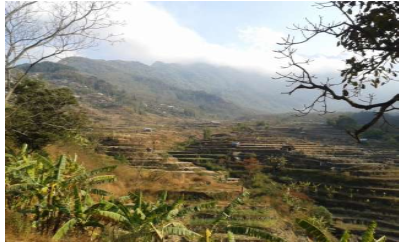
Some of the important festivals celebrated in Nagaland are: Hornbill, Moatsu, Nazu, Sekrenyi, Tuluni, Yemshe, Amongmong and Tsokum.
Hornbill: is a popular festival celebrated in Nagaland. The festival organised by the State tourism department is celebrated during 1- 7 December in Kisama Heritage Village, Kohima, (the capital of Nagaland). The festival is named after the bird, Hornbill which has a major significance in the folklore, songs and dance of the tribes. Traditional music, folksong and dance mark the celebrations. This festival is also the time when the 16 tribes of Nagaland come together showcasing the different cultures of the tribes. In the evenings, different rock bands play music which is followed by night market. One main attraction of the festival is, various games are organised by the youth along with fashion shows, chilli eating competition, traditional archery, indigenous games and music concerts. The main objective of observing this festival is the revival and protection along with showcasing the culture and tradition of Nagaland. This is also the time when the tourists are treated to traditional dance and songs, fairs, traditional cuisines and local sports. Traditional arts such as wooden carvings, paintings are on display for the tourists.
The tribes of Nagaland also celebrate this festival in the month of March-April before sowing Aahu Dhan.
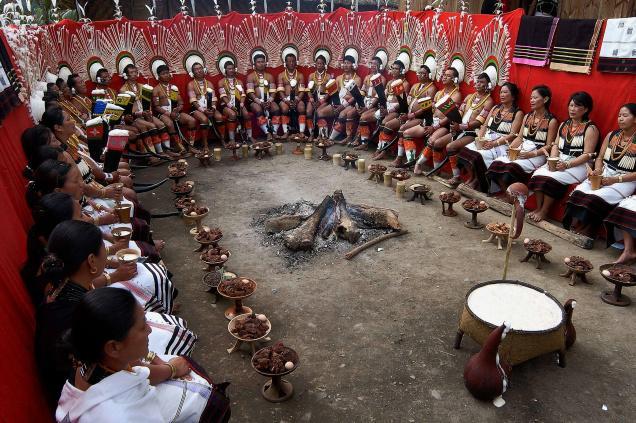
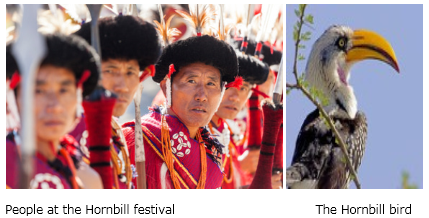
Aoleang Monyu Festival:
The Konyaks tribe who live in the Mon district celebrate the Aoleang festival in the first week of April for six days. The festival is celebrated after sowing. The festival is observed to seek blessings of Lord “Yongwan” for a good harvest. The six days of the festival are known by different names such as: (1) Hoi Lai Yah Nyih (2) Yin Mak Pho Nyih (3) Yin Mok Sheh Nhih (4) Lingnyu Nyih (5) Lingha Nyih and (6) Lingshan Nyih. During the festival, young and old alike dress in traditional attire with feathers in their head and perform traditional dance and sing folklore.
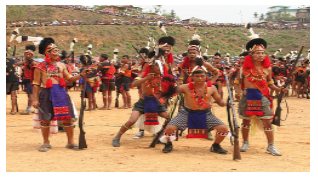
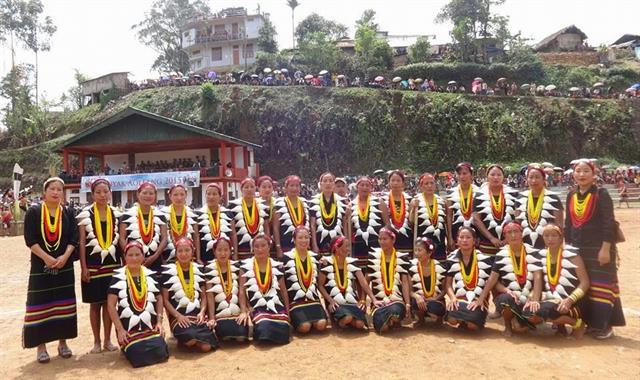
Sekrenyi : Angamis, a tribe of Nagaland celebrate Sekrenyi, a 10 day long festival in February. The festival starts on the 25th day of the Angami month of “Kezei”. Sekrenyi is also known as “Phousnyi”. On the eve of the festival, the village well is thoroughly cleaned for the elders of the village to take bath. No one is allowed to draw water after the well is cleaned. Two youth are also posted to guard the well. On the first day of the festival the elders take the ceremonial bath in the well. Cleaning of the well symbolises the cleaning away of the sins or misfortunes. On the day of the festival, men wear two new shawls, the white Mhoushu and the black Lohe and sprinkle water on right arm, breast and knees. This ritual of sprinkling water is known as “Dzuseva” and is believed to wash away all the past sins.
On returning home after the bath, a cock is strangled with bare hands. It is considered as a good omen if the right leg of the cock falls down first. The cock is then hung outside the home, which is then inspected by the elders of the village. It is from the fourth day that the merriment begins which lasts for three days. Young people sing and dance throughout the day during which rice beer and meat is served. People go on hunting on the seventh day of the festival and on the eighth day competitions such as gate pulling or bridge pulling is held when people from nearby villages also participate. Agriculture related work begins after the end of the festivities. An important ritual of the festival is few drops of rice water is taken from a jug called as Zumbo and put into the leaves. This is then placed at three main posts of the house by the lady of the house.
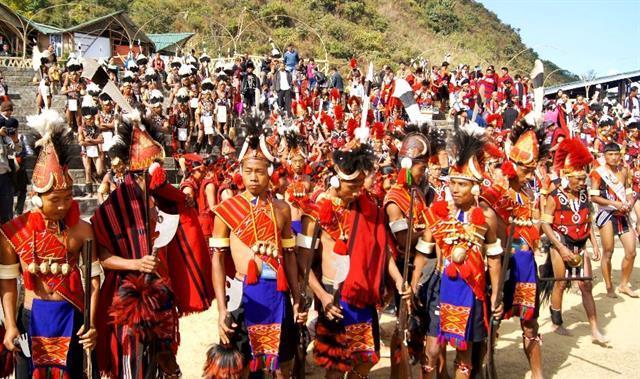
Moatsu Festival: The Ao tribe observe the festival from 1- 3 of May after sowing of seeds for three days. Bon fire, known as Sangpangtu is prepared and men and women dressed in their traditional attire and jewellery sit around the bon fire. Pigs and cows reared through the year are slaughtered and the meat is served along with rice beer and wine to men. This festival is strictly celebrated by the villagers of Ao tribe. Before the start of the festival, the village gates are closed and entry and exit of people not belonging to the village is restricted. Traditional song and dances mark the celebrations. As part of the festivities, tug of war is held between men and women. The festival is celebrated in Mokokchung district, the home of Ao tribe.
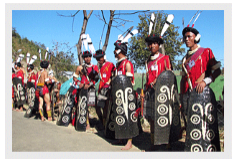
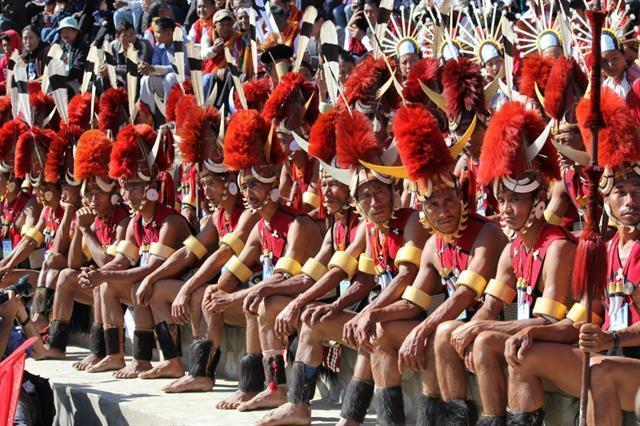
Tsungrem Mong: Ao tribes celebrate the festival during 1-3 August before the harvest. Prior to the beginning of the festival, the Village head will declare the village as closed. The entry and exit into the village is guarded by the villagers. This is an occasion of thanksgiving to the Almighty for giving a good crop. Young men and women dress in their traditional finery and indulge in fun and frolic. On this occasion, tug of war between men and women draws people from all over the village.
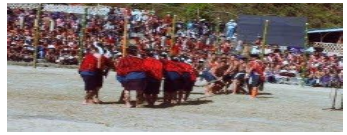
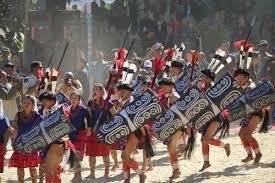
Tsukhenyie: This is an important festival of the Chakhesang tribe. The festival is observed on 6th May for four days. On the day of the festival, the village priest kills the first cock that crowed in the morning. Men take bath in a place designated for bathing and dress in new clothes. After the bath, prayers are offered to the Almighty seeking peace, prosperity, good health and harvest. During the festival, only the best male domesticated animals are slaughtered. New wine will be prepared. All the family members enjoy the meat and other delicacies prepared for the festival. Games, dance and other competitions are organised between various groups. At the end of the festival, the articles used in merry making will be stored away till next year. Celebrations of any kind are forbidden after the festival.

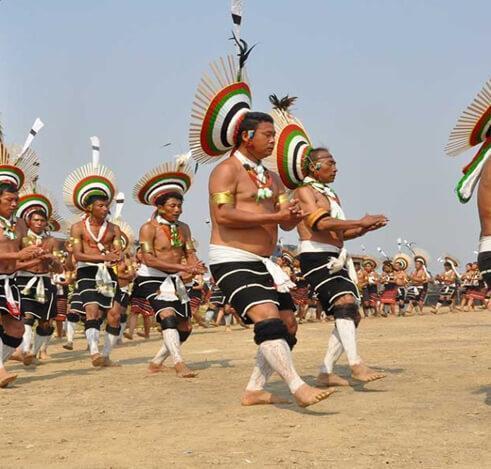
The other festivals celebrated by the Chakshesang tribe are:
Sukhruhyne, Ngune, Tsakronye, Tukhanye, Khuthonye, Turhinye and Thurinye/Khiluvatu.
Bushu: The Kachari tribe of Nagaland observe this festival in the last week of January. This is a post harvest festival celebrated when there is moon light in the sky. The village priest offers rice, pork, mutton, chicken, buffalo meat and rice beer to the deity known as “Sibarai”. The village priest observes certain rituals for killing the animals. The offering to the god is then followed by community feast. Then people of all ages get together and dance and make merry. Several traditional games are organised. Dance and singing competitions are also held.
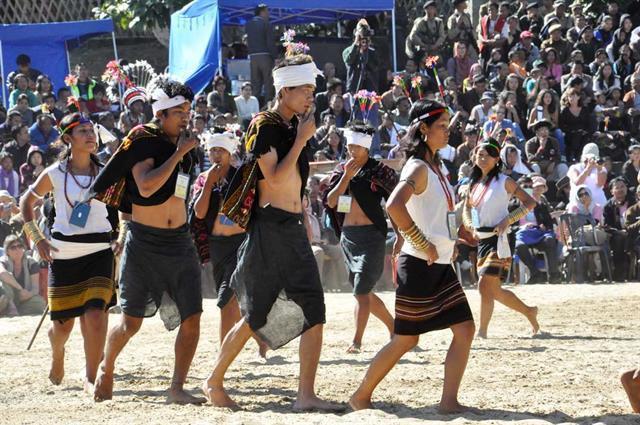
Rengma Ngadah: This is a festival observed in the last week of November for eight days. This is a thanks giving occasion when the Supreme Lord is worshipped for giving a good yield. Rice beer is prepared on the first day of the festival. Banana leaves are collected from the forest on the second day. On the third day, women visit the graveyard and place rice beer wrapped in banana leaves on the grave. It is a day when ancestors are believed to visit their kith and kin. On this day, the rice beer is prepared and is tasted by the eldest in the family. All the remaining family members are expected to drink rice beer from it. On the fourth day, men dressed in their traditional attire go round the village. Women folk carry rice beer and mugs in bitter gourd containers to offer them drinks. On the fifth day all the male members go in a procession visiting every house in the village singing songs of Ngadah. Members of the household are expected to give some gift, either cash or kind as a token of appreciation of their songs. On the sixth day all the members of the village visit the house of one another irrespective of clan, eat and drink with one and all in the family. On the seventh day, all the members go to the forest for collecting fruits, vegetables, banana leaves, firewood etc for the feast on the following day. The festival ends with a grand feast arranged in the village where the entire village takes part in the community feast. It is believed that the soul of the ancestors leave the village after the feast. After the feast, certain rituals are performed for protection of the village against natural disasters, for protection of crops and to drive away the evil spirits from the village.
Nazu: Nazu, is a 10 day festival celebrated in February before sowing the seeds by the Pochury tribe. The festival is also celebrated to bid farewell to the year gone by and welcome the New Year. During the festival various forms of dance and songs are performed by the people.
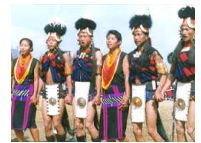
Tuluni: The Sumi Naga tribe celebrate Tuluni festival during the second week of July. The two sects of the tribe- Tuku and Swu celebrate the festival in unique ways. The festival begins with rice beer served in a goblet. The goblet in which the wine is served is known as Tuluni. During the festival, gifts are exchanged among relatives. Cows and pigs are also slaughtered and shared among the community members. A group feast is also organised for the farmers.
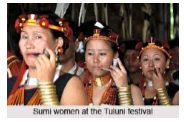
Yemshe: This is celebrated on 5th October by the Pochury tribe. The festival is observed to commemorate the harvest season. The Village head announces the dates of the festival. The Pochuries start the preparation for the festival after the announcement of the date. Preparation starts with the youth cleaning the village. The guardian angel then initiates the family rituals. The festival is celebrated in two parts- Big Yemshe and small Yemshe. Big Yemshe is renewing the familial ties. Small Yemshe involves cleaning the house and taking part in a grand feast.
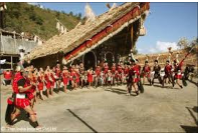
Sankarni: Zemis tribe of Nagaland celebrate Sankarni around Shivaratri for one week. Eating, drinking, dancing and singing mark the celebration of Sankarni.

http://www.webindia123.com/NAGALAND/Index.htm
http://www.north-east-india.com/nagaland/nagaland-festivals.html
http://www.dtrenztours.com/nagalandevents.html
http://tourismnagaland.com/Festivals.html
http://www.mapsofindia.com/nagaland/society-and-culture/festivals.html
http://en.wikipedia.org/wiki/Hornbill_Festival
View/s: 20987 Comment/s: 0
